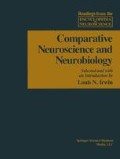Abstract
They are primitive and underdeveloped, they have no corpus callosum, their cerebral circulation is unusual, and there is something strange about the cortical organization of their sensory-motor system. This summarizes the common knowledge of marsupial brains, knowledge which in large measure has been garnered from studies of one species, the Virginia opossum, Didelphis virginiana. Within the last 10–15 years studies of other marsupial nervous systems have disclosed a remarkable degree of organizational variety and complexity, a variety which parallels, and in some cases exceeds, that seen among placental mammals. Though this diversity and variety is of great intrinsic interest, the study of marsupial neurology is important for other reasons as well.
Access this chapter
Tax calculation will be finalised at checkout
Purchases are for personal use only
Preview
Unable to display preview. Download preview PDF.
Further reading
Reviews and symposia
Johnson JI Jr (1977): Central nervous system of marsupials. In: The Biology of Marsupials, Hunsaker D, ed. New York: Academic Press.
Rocha-Miranda CE, Lent R, eds. (1978): Opossum Neurobiology (Neurobiologia do Gamba). Rio de Janeiro: Academia Brasiliera de Ciências.
Research papers
Haight JR, Murray PF (1981): The cranial endocast of the early Miocene marsupial, Wynyardia bassiana: an assessment of taxonomic relationships based upon comparisons with recent forms. Brain Behav Evol 19: 17–36.
Haight JR, Nelson JE (1987): A brain that doesn’t fit its skull: a comparative study of the brain and endocranium of the koala, Phascolarctos cinereus (Phascolarctidae). In: Possums and opossums: studies in evolution, Archer M, ed. Sydney: Zoological Society of New South Wales, in press.
Haight JR, Neylon L (1978): Morphological variation in the brain of the marsupial brush-tailed possum, Trichosurus vulpecula. Brain Behav Evol 15: 415–445.
Haight JR, Neylon L (1979): The organization of neocortical projections from the ventrolateral thalamic nucleus in the brush-tailed possum, Trichosurus vulpecula, and the problems of motor and somatic sensory convergence within the mammalian brain. J Anat 129: 673–694.
Haight JR, Neylon L (1981): A description of the dorsal thalamus of the marsupial native cat, Dasyurus viverrinus (Dasyuridae). Brain Behav Evol 19: 155–179.
Sanderson KJ, Haight JR, Pettigrew JD (1984): The dorsal lateral geniculate nucleus of macropodid marsupials: cytoarchitecture and retinal projections. J Comp Neurol 224: 85–106.
Rights and permissions
Copyright information
© 1988 Springer Science+Business Media New York
About this chapter
Cite this chapter
Haight, J.R. (1988). Marsupials, Nervous System. In: Comparative Neuroscience and Neurobiology. Readings from the Encyclopedia of Neuroscience . Birkhäuser, Boston, MA. https://doi.org/10.1007/978-1-4899-6776-3_28
Download citation
DOI: https://doi.org/10.1007/978-1-4899-6776-3_28
Publisher Name: Birkhäuser, Boston, MA
Print ISBN: 978-0-8176-3394-3
Online ISBN: 978-1-4899-6776-3
eBook Packages: Springer Book Archive

